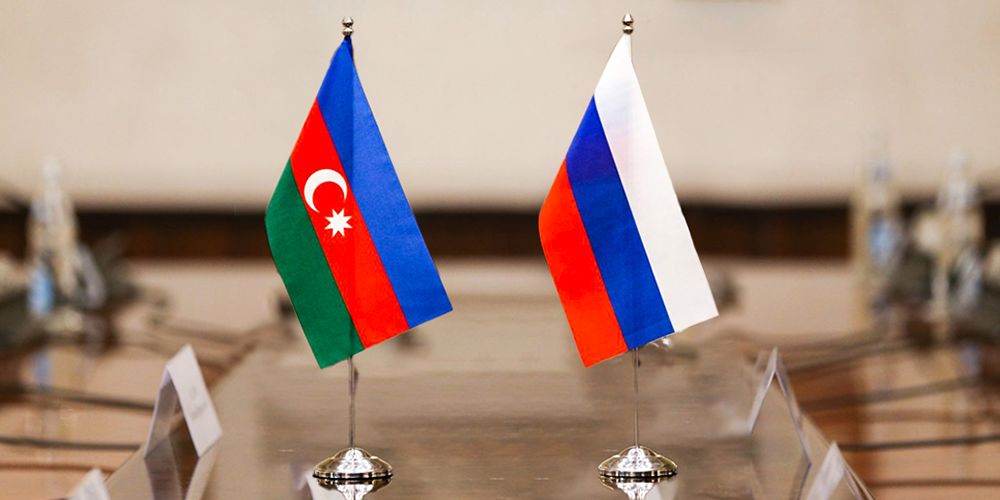Search

Publications
Impact of military operations on economic activity, investment and industrial policy of Russia and Azerbaijan

Comparing the consequences and effects of Azerbaijan’s military operation in 2020 («The Iron Fist») and Russian Special Military Operation (SMO) in Ukraine is a relevant analytical task taking into account their impact on the bilateral relations and on the FSU macroeconomics in general.
At the same time, different scale of these operations (both time-wise and space-wise), different objectives and consequences make such comparison not an easy task from the standpoint of economics and quite controversial within the political context.
Through the lens of national security
One of the significant factors bringing Azerbaijan and Russia closer is their common approach to national security, political and economic sovereignty. Reinstatement of national sovereignty over the territories occupied by Armenia (in the case of Azerbaijan) and the comprehensive task of creating long-term conditions for regional security, for social and economic development on the Western borders (in the case of Russia) – both countries are implementing these tasks relying on their own resources and on the resources of their regional allies.
«The Iron Fist» operation lasted 44 days and resolved the majority of the national security problems, returning into commercial operation over 10 thou square kilometers of the Azerbaijanian land, as well as the problem of losing military and political control over the significant part of the territory of the country resulting from the war between Armenia and Azerbaijan in 1991-1994. This operation received military and technical support of Turkey, and Russia announced its political neutrality confirming the previously achieved agreements between Vladimir Putin, Ilham Aliyev and Recep Tayyip Erdogan with regards to the model of settling the Karabakh conflict.
However, for a short period Baku found itself in the risk zone, because it was not absolutely clear what the reaction will be on behalf of the USA, NATO and part of the Western community being informally sympathetic towards the Armenians. Though, as per the international law rules (protection of sovereignty and territorial integrity), Azerbaijan was performing absolutely lawful actions in its legitimate territory.
After having started its special military operations, Russia came across long-term economic risks and political stakes of quite different scale – the maximum ones possible in the first quarter of the 21st century. No analogues to that may be found.
Contrary to Baku, which started its operation quite unexpectedly for practically all the outside observers, Moscow did not reject the possibility of political compromise with respect to strategic challenges (see draft Security Guarantees Agreement published in December 2021) making daily warnings about the potential consequences of its interests being ignored.
On behalf of Moscow, the doors for political resolution of security problems of Russia in Eastern Europe were open until the very start of the military operation, and even in the following months. However, the essential security interests of the Russian Federation were ignored, and Kremlin started special military operation.
Global and regional consequences
Both global and regional consequences of the special military operation substantially reshaped the entire post-Soviet social and political realm: they stimulated the appearance of new economic actors (buying out the assets of the Western companies exiting Russian market), created exclusive conditions for developing the Russian economy in the import-phaseout mode, and the economies of CIS/EAEU countries – in the mode of «transit sluice», changed the domestic political context. The pace of changing macroeconomic landscape presented a serious complication for any mid-term forecasts, and the special military operation turned into a truly international conflict.
The Caspian Region, until recently being in the periphery of global process, now finds itself in the center of legal and economic restrictions imposed by the Western coalition: there are over 14 thousand financial, banking and insurance-related restrictions laid upon legal entities and individuals from Russia, and over 3,600 restrictions laid upon economic actors and politicians from Iran.
At the same time, the Caspian Region continues to unite the most consistent Russian allies, who often succeed in bypassing the economic sanctions developing their own banking and financial environment and independent transportation infrastructure.
Let us once again emphasize: Ilham Aliyev was the only leader who had a chance to get the impression of the nuances of the special military operation at its very start directly from Vladimir Putin, with whom he had a meeting in Moscow on the eve of the SMO start. Azerbaijan turned out to be the only foreign state outside the EAEU for Russia to sign the Declaration on Allied Interaction confirming its commitment to the principles of good-neighborly relations and economic support in case of emergency situations. The recent 18 months confirmed the importance of this document.
In their speeches, Vladimir Putin and Ilham Aliyev always confirm that the parameters of the Declaration dated 22 February 2022 have not been violated, and it still plays the important role of a framework document, just like the Trilateral Nagorno-Karabakh Cease-Fire Agreement dated 9 November 2020, which served as a prologue for peaceful interaction between Azerbaijan and Armenia.
According to Ilham Aliyev, the relations with Russia remain well-balanced: «They were always based on recognition of national interests and, of course, of the territorial integrity and sovereignty of both countries. For Azerbaijan, Russia is a neighbor and a partner – we have significant commodities turnover and a series of joint projects in transportation infrastructure, especially in the current situation. The projects in the energy sphere and in culture are also very important, of course» (interview to Euronews dated 2 August 2023).
For better understanding the value of the Declaration for the bilateral relations, we need to refer to the Aliyev’s evaluation of this document voiced by him at the global Shusha media forum: «As for the period we are undergoing after signing this document, this is a completely new period for the entire world, for the region including both Russia and our country. But regardless of that, despite such serious change of the geopolitical situation, the development of Russian-Azerbaijanian relations went on quite successfully since we signed the Declaration. We had numerous contacts at the top levels, at the level of the heads of our governments, of foreign affairs ministries and other government and public representatives. That is why I can confidently state, that the Declaration provisions are coming into practice. The main thing is that there is a political will for that».
Parameters of the reconstruction of the liberated territories
In reconstructing their liberated territories, Russia and Azerbaijan each is acting within its own scope counting on their own national resources (primarily, on domestic investment). The main objectives are: reconstruction of the transportation and communication systems, creating the required conditions for operating the utilities, returning refugees, developing industrial sector and services (increase of CAPEX), using the free economic zones mechanisms.
Let us compare some parameters of reconstruction of the liberated territories in Russia and in Azerbaijan.
Almost 46 thousand specialists are engaged in the reconstruction activities in the new regions of Russia, this is the biggest «construction site» in the country over the recent decades. In H1 2023, 2.2 thousand of residential buildings were built and reconstructed in the territory of the new entities of the Russian Federation, over 317 km of roads were repaired. To upgrade the public utilities, the special program of their comprehensive development and upgrading was adopted. The plan is to build and reconstruct about 8.4 facilities within the next three years: about 3.5 thousand of them are apartment buildings, almost 1.4 thousand are social and cultural facilities, and about 2.5 thousand are utilities. The free economic zone (FEZ) is being established in the territory of the Donetsk People’s Republic.
Accession of the territories of the Donetsk and Lugansk People’s Republics, Kherson and Zaporozhe regions extended Russian territory by 108,840 sq. km. This area may be compared to the territory of Bulgaria. At the same time, Russia hosted almost 5 mln of Ukrainian refugees – they are waiting for the chance to return home, but some of them need permanent accommodation in the RF regions. This is additional load for the building industry and social expenditures.
Azerbaijan set similar tasks in Karabakh. If we take the absolute numbers, the liberated territories constitute the total of 16.46 thousand square kilometers. It includes 7.47 thousand sq. km of East Zangezur and 8.99 thousand sq. km of Karabakh economic regions. Thus, the Karabakh economic region becomes the biggest in the country, exceeding the area of Shaki-Zagatala economic region (8.84 thousand square kilometers).
More than 150 thousand refugees are expected to return to Karabakh and East Zangezur by 2027. Roads, bridges, tunnels, power plants, water reservoirs, power transmission lines schools, hospitals, residential buildings and mosques are being built and reconstructed there. By the end of 2023, total CAPEX will amount to almost AZN 12 bn (about USD 7 bn).
The share of East Zangezur in total Azerbaijanian GDP by 2024 is expected to make 3.4%, and the share of Karabakh – 8.9%. Thus, Karabakh region will demonstrate the third highest metrics after the leaders – Baku economic region (22% of GDP) and Lankoran-Astara region with its 9.4% share of Azerbaijanian GDP.
Another factor contributing to the rapprochement of Russian and Azerbaijanian economies is the growth of domestic investment (and investment by allies) and the U-turn of CAPEX to the continuing growth.
The total investment into Azerbaijan economy (from all the sources) in 2022 was record high making AZN 29,135.1 mln (USD 17,138.3 mln), which is by 15.1% higher vs. 2021. The shares of domestic and foreign investment got practically equal. Foreign investment into Azerbaijan economy grew by 16.7% up to AZN 14,879.3 mln (USD 8,752.5 mln). Domestic investment grew by 13.2% up to AZN 14,255.8 mln (USD 8,385.8 mln).
It is interesting that according to the Central Bank of Azerbaijan, Russian direct investment into the Azerbaijan economy in 2022 grew more than 10 times up to USD 377.7 mln. The new economic policy of the Russian Federation allowed for drastic ramp-up of the investment into the Azerbaijan economy in two areas – corporate investment and private investment.
Russia moved to the fourth position among all foreign investors in Azerbaijan after the UK, Turkey and Cyprus (recurrent investment from the offshore zone by the Azerbaijanian economic entities). Russia managed to maintain financial and lending activities inside the country, the domestic investment in 2022 grew by 5.9% YoY despite some initial negative forecasts of the RF Ministry of Economy.
New economic reality effects
Let us list here the most visible effects of the new economic reality impacting Azerbaijan and the overall CIS/EAEU territory in 2020-2022. Some of them (e.g., inflation) result from the processes of 2020 (the Pandemic effect) reinforced by the current military operations:
- Official inflation within 14-22% in all the CIS/EAEU countries, the fact for some commodity groups being much higher. In Azerbaijan – 13.9% in 2022 (6.7% in 2021). The key driver is global growth of fuel and food prices. It should be taken into account that indirectly inflation is stipulated, in addition to RUB exchange rate fluctuations (the trend of Russian import growing more expensive in 2022 until the summer of 2023), the jumps of the Turkish lira exchange rate. As of the end of 2022, Turkish prices grew most of all in the residential housing sector (79.83%), food and non-alcoholic beverages sector (77.87%);
- Tourists flow from the Russian Federation and «stressed relocated persons» significantly impact the Azerbaijanian real estate market (purchasing and leasing): non-residents’ bank deposits in Azerbaijanian banks grew 3.9 times (AZN 1,174.2 mln). To compare: in 2022, bank deposits of the Azerbaijan citizens grew by 18.2% (circa AZN 10.4 bn);
- Money transfers from individuals constitute one of significant factors of the Russian economy influencing the economy of Azerbaijan. According to the Central Bank of Azerbaijan, the major part of individual transfers in 2022 were made from Russia – for USD 2,969.44 mln (4.8 times growth), i.e., 82% of all money transfers from individuals (13.6% in 2021);
- The growth of sales turnover between Russia and the CIS/EAEU countries in 2022 made from 15% up to 40%, in the current year the trend persists. In 2022, sales turnover between Russia and Azerbaijan made USD 3.71 bn (23.9% higher than in 2021);
- Increased inflow of currency into the budgets and reserve funds of the group of oil-and-gas exporters from the CIS/EAEU countries (and noticeable growth of income of all the mining companies in the region). The assets of the State Oil Fund of Azerbaijan in H1 2023 grew by 12% up to USD 54,915.1 as of 30 June of this year;
- Accelerated growth of the sales turnover with the European Union. In 2022, the turnover between Azerbaijan and the EU countries reached the record of EUR 33,154.208 mln (2.3 times growth vs. 2021). Azerbaijanian export grew 2.4 times achieving EUR 31,107,429 mln, import grew by 39.4% up to EUR 2,046,779 mln. The key driver was the increase in oil and gas supplies (gas supplies grew by 19% in volumes);
- Growth of income of Azerbaijanian exporters in such sectors as agricultural industry, petrochemicals production and electricity generation (with respect to electricity, it is a new trend observed in 2023). The non-petroleum export in 2022 achieved USD 2.7 bn, the share of the oil-and-gas sector in total GDP grew by 9.1% (â 2021 – by 7.2%);
- The factor of changing the destinations of commodity flows, the «new» logistics, growth of container shipments in the Caspian ports.
In 2022, the cargo traffic along the Azerbaijanian Railways constituted 18.7 mln tons. The cargo traffic along the Trans-Caspian route in January-June of 2023 exceeded 1.3 mln tons (1.8 times higher vs. the same period of 2022 ). In 2022, it was 1.5 mln tons and grew 2.5 times vs. 2021.
Hence, a year and a half of the special military operation and the global economic crisis caused by the effects of this operation will rather contribute to the strengthening of Azerbaijanian and Russian economies switching them «to the new tracks».







